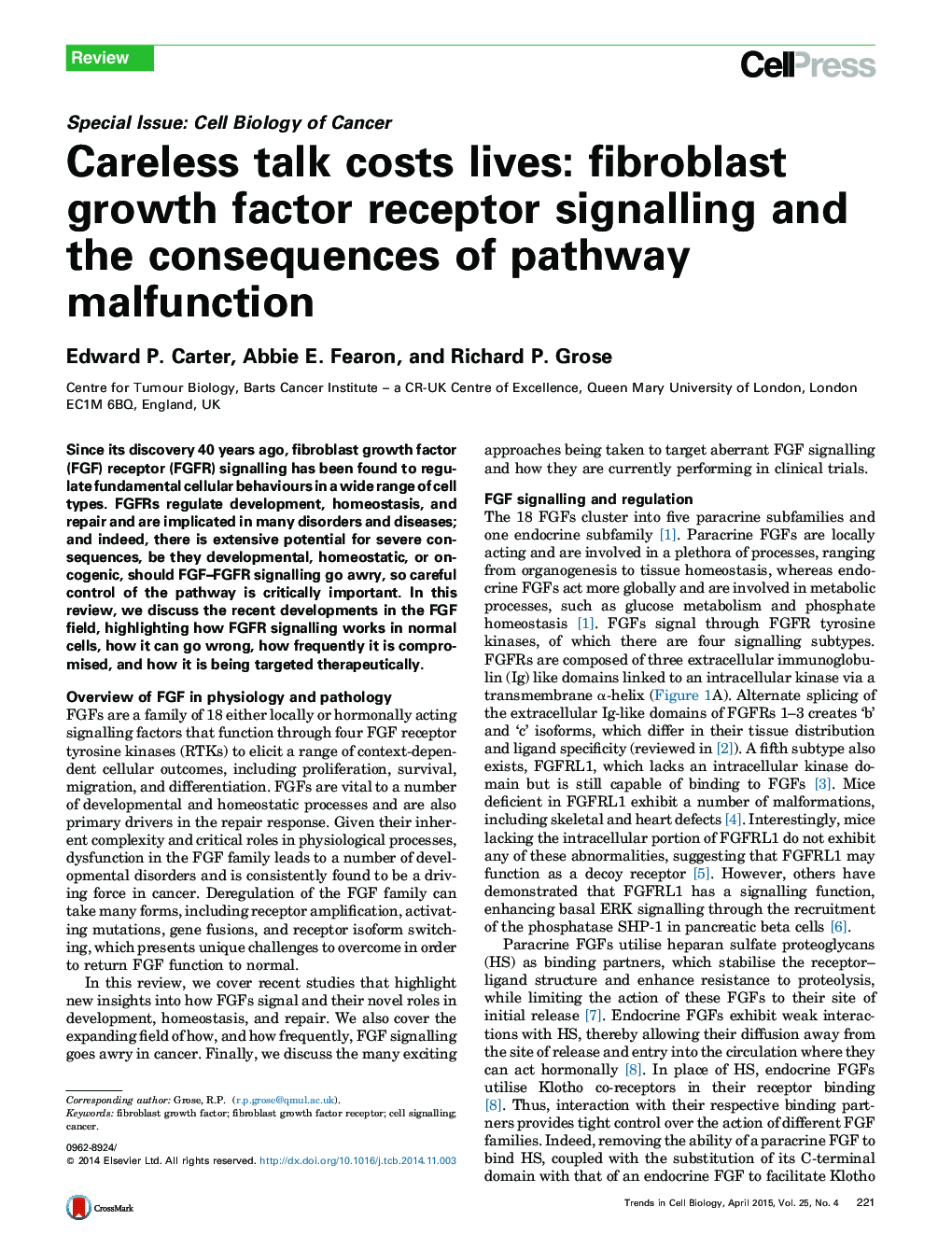| Article ID | Journal | Published Year | Pages | File Type |
|---|---|---|---|---|
| 2204356 | Trends in Cell Biology | 2015 | 13 Pages |
•We review the latest data on cellular fibroblast growth factor receptor (FGFR) signalling mechanisms and pathways.•We highlight key roles of FGFR signalling in normal development and repair.•We address how, and how often, it can go wrong in development and cancer.•We review the latest data on how FGFR signalling is being targeted therapeutically.
Since its discovery 40 years ago, fibroblast growth factor (FGF) receptor (FGFR) signalling has been found to regulate fundamental cellular behaviours in a wide range of cell types. FGFRs regulate development, homeostasis, and repair and are implicated in many disorders and diseases; and indeed, there is extensive potential for severe consequences, be they developmental, homeostatic, or oncogenic, should FGF–FGFR signalling go awry, so careful control of the pathway is critically important. In this review, we discuss the recent developments in the FGF field, highlighting how FGFR signalling works in normal cells, how it can go wrong, how frequently it is compromised, and how it is being targeted therapeutically.
